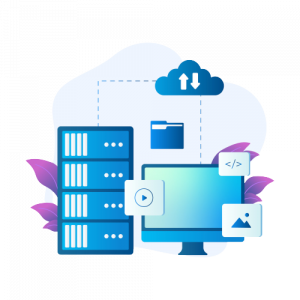
ColdFusion is a popular web application development platform for creating dynamic and interactive websites. However, due to the lack of resources to keep up with the organization’s growing demands, the platform has become less popular and is gradually being phased out. As a result, many organizations are now considering migrating their ColdFusion applications to different programming languages, such as Java.
Java is a dynamic programming language that can be used for developing software applications for desktop as well as mobile devices. It offers numerous advantages over ColdFusion. Developers find it much easier to work with Java as compared to Cold Fusion due to its extensive libraries and frameworks that make coding simpler and faster.
According to a report by Oracle Corporation, Java is the most preferred development language by organizations over others and accounts for about 45 billion active virtual machines globally.
In this blog, we will discuss the benefits of migrating to Java, the feasibility of this process, along with some do’s and don’ts.
……………………………………………………………………………………………………
The Benefits of Migrating to Java
Migration from ColdFusion to Java can bring several benefits to organizations. Here are some prominent benefits:
Better Performance: Java is a high-performance language that can handle large volumes of data and high-traffic websites. Compared to ColdFusion, Java applications perform better and are more responsive, providing a better user experience.
Improved Scalability: Java is a highly-scalable language that can handle the growth of applications as traffic and data volumes increase. This means migrated applications can grow with the organization and support the required demand without significant changes or upgrades.
Enhanced Security: Java has several built-in security features, including secure coding practices and encryption tools. This makes the migrated applications more secure and less vulnerable to cyber threats.
Wider Talent Pool: Java is a widely used programming language that has a large talent pool of developers and resources available. Studies show that there are 12 million IT engineers that are proficient in this programming language. That’s why organizations can access a broader range of development expertise and support for migrated applications.
Greater Integration Capabilities: Java has strong integration capabilities, allowing it to integrate with other technologies and systems. This means that migrated applications can be integrated with other tools and systems used by the organization, improving efficiency and reducing manual workload.
……………………………………………………………………………………………………
How Feasible is it to migrate from ColdFusion to Java
The first question that comes to mind when considering the migration of ColdFusion applications to Java is whether it is feasible. The answer is yes. The two platforms have many similarities, with both being used for web application development. Additionally, both use similar programming concepts, such as variables, loops, and conditional statements. However, there are also several moving parts involved in this process. The flexibility depends on a number of factors, such as the size and complexity of the application, system architecture, databases used, integration with other services, etc. For instance, if the application is tightly integrated with legacy systems or other external services, it might not be possible to migrate certain components without making major changes.
Another challenge in migrating ColdFusion applications to Java is the fact that the two platforms use different syntaxes. Additionally, the migration process will also involve converting ColdFusion tags to Java classes and methods, which can be time-consuming and tedious. Hence, a thorough assessment should be conducted before beginning any migration project in order to identify which components can be migrated and which need to be rewritten.
Do’s of Migrating from ColdFusion to Java
- Plan your Migration Carefully: Before migrating your ColdFusion applications to Java, it is important to plan the entire process thoroughly. This includes understanding the existing application architecture, identifying the components that will need to be ported/migrated, and determining a timeline for the project.
- Reuse Existing Components: Whenever possible, try reusing existing components such as libraries, frameworks, and APIs instead of recreating them from scratch. This can help save time and resources during the migration process.
- Test Thoroughly: The success of your migration project depends on thorough testing once all development activities are complete. Testing should include unit tests, integration tests, and regression tests to ensure that all features work as expected after the migration is done. Take advantage of automated testing tools like Appium and Selenium for the early detection of any issues during the transition phase.
- Prioritize Security: Security should always be a top priority when migrating ColdFusion applications to Java. Ensure that the new application follows all security best practices and is compliant with industry standards.
Don’ts of Migrating from ColdFusion to Java
- Don’t Rush the Migration: Migrating from ColdFusion to Java is a complex process that requires careful planning and execution. Rushing the process can result in errors and, in some cases, lead to project failure. It is essential to take the time to ensure that the migration is done correctly and that all aspects of the application are working as expected.
- Don’t Ignore Documentation: If documentation is neglected, it may be challenging to maintain the migrated program in the future. Both, the migration procedure and any code alterations, should be thoroughly documented.
- Don’t Forget About the Database: There must be a robust mechanism to migrate databases from one location to another so as to ensure that the databases are compatible with Java and that the data is migrated correctly. This includes ensuring that the database is in the correct format and that there are no data integrity issues.
- Don’t Forget About Leveraging Java frameworks: Utilizing popular Java frameworks such as Spring, Hibernate, Vaadin, etc., can help to improve the scalability and reliability of the application.
……………………………………………………………………………………………………
Conclusion
Migrating from ColdFusion to Java is a complex process that requires meticulous planning and execution. It involves understanding the existing application architecture, identifying components for migration, testing post-migration thoroughly, prioritizing security protocols, and leveraging Java frameworks like Spring or Hibernate.
At Mindfire Solutions, we have more than two decades of experience in helping companies migrate and modernize their applications smoothly with minimal disruption to operations and maximum gains in terms of reliability and scalability. If you are considering migrating your ColdFusion application to Java, get in touch with our team.
Visit Mindfire Solutions to learn more about us.
